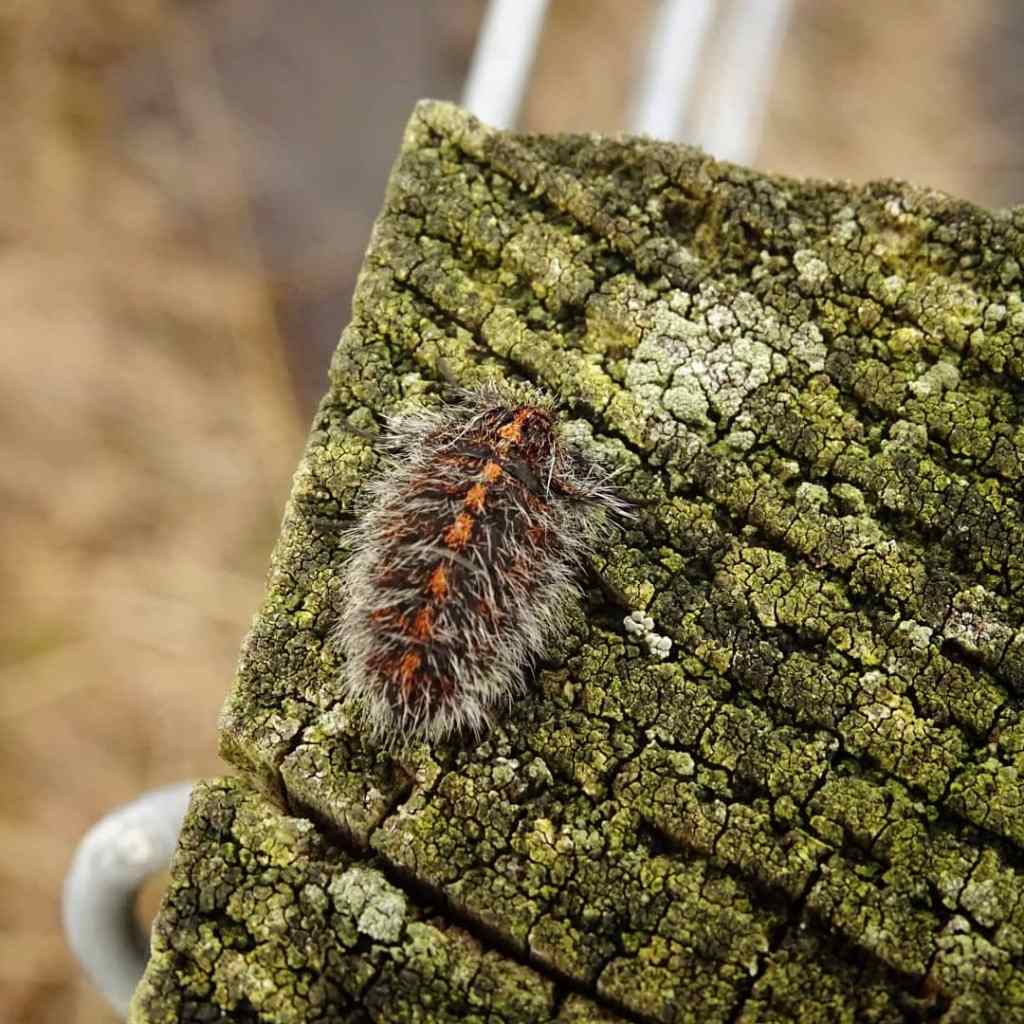Flanders Moss NNR
It’s that time of year, the belly-button-fluff count.
On Tuesday we spent the day zig-zagging across Flanders Moss to count Rannoch Brindled Beauty moths. We split the Moss into different sections and allocated transects for each person to survey. The survey was a success, finding females in all transects but one (sorry, Bethia, you drew the short straw there!) and 4 males were counted across the moss. One surveyor even found 7 females on one tree!
For those who are not familiar with these endearing little moths, the female is wingless and so cannot fly about. In order to find a mate and reproduce, she must climb up birch trees and fence posts and wait for a male to pick up the pheromones she’s releasing and find her.
Her wingless state gives her the appearance of a little blob of fluff, and sure enough these blobs can be found sitting and waiting on top of fence posts, just like the one below. I can’t describe how excited I was when I first saw one…


The moth is a nationally-scarce species and not a huge amount is known about their ecology. Knowing their preferences for fence posts and medium-sized birch trees is extremely beneficial to survey and monitor the moths, but there is ambiguity around their food plant preferences. They are often found in close proximity to Bog Myrtle – a sweet-smelling bog-specialist – but not always. In fact, many of the moths we found on Tuesday seemed to be nowhere near Bog Myrtle. As well as counting the moths in our transects, we also recorded the plant species around them so that we can see if there is any relationship there.

The more we know about these moths the more we can understand their vulnerability to factors such as climate change, particularly if their food plants are affected. This knowledge could, in turn, contribute to understanding similar effects on other species. You never know – we believe the more data, the better! Because of this, I’m anticipating a summer of crawling on my hands and knees looking for RBB caterpillars on the bog plants. What can I say, I’m hooked on them now!
Another striking feature of the female moths is how similar they look to early Bog Cotton flowers – a perfect disguise! I’ve been caught out several times by flowers leaning against fence posts looking incredibly RBB-like.

They seem to take a liking to old, craggy fence-posts where the female can lay her eggs, via a long ovipositor, into the nooks and crannies. When the caterpillars hatch out, they are thought to ‘balloon’ (send out a thread of silk to catch the wind) and disperse across the bog. Considering about 50% of them will turn out to be flightless females, I guess that’s a rather efficient way to spread out!
Here are some more pictures of fluff, just because…






Excellent photos! I know from personal experience how hard it is to get a sharp pic of these fluffy beauties.
LikeLiked by 1 person
This is fascinating and your photgraphs are excellent.
LikeLiked by 1 person
Fascinating! They are cute little creatures. 😊❤
LikeLiked by 1 person
Fabulous, another amazing nature story, thankyou for sharing. 🙂
LikeLiked by 1 person
Pingback: Staring at fence posts | 2 bogs, a swamp and some islands
Pingback: Fencing? No, fencing! | 2 bogs, a swamp and some islands
Pingback: Silver and Sand | 2 bogs, a swamp and some islands
Pingback: Getting comfortable with spiders | 2 bogs, a swamp and some islands
Pingback: The belly-button fluff is back | 2 bogs, a swamp and some islands
Pingback: Magical, mythical moths | Loch Leven National Nature Reserve
Pingback: Going out with a bang | 2 bogs, a swamp and some islands
Pingback: The bog is not in our books and maps, it’s out there. | 2 bogs, a swamp and some islands